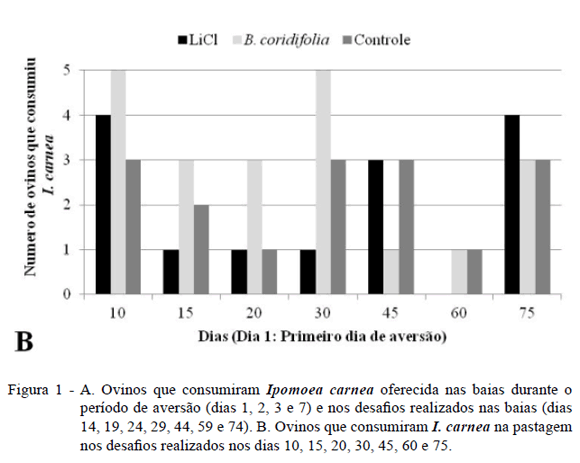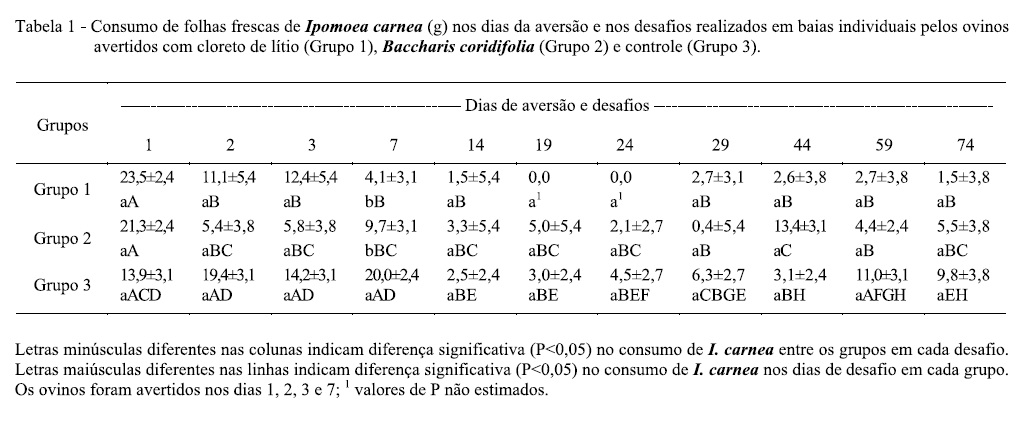Fifteen sheep were adapted to consume I. carnea for 36 days. Subsequently sheep were randomly divided into three groups of five sheep each. Group 1 was averted with LiCl, group 2 was averted with B. coridifolia, and Group 3 was the control group. The sheep were periodically tested by exposing to I. carnea in the pasture and in individual pens up to the 74th day after the first day of aversion. On the 14th and 19th days the number of sheep in Group 3 that consumed I. carnea was significantly higher than the number of sheep that consumed I. carnea in Groups 1 and 2 (P=0.004 and P=0.0004, respectively). On day 24 the number of sheep that consumed I. carnea was significantly higher in Group 3 than Group 1 (P=0.004). After the challenge on the 29th day no significant difference (P>0.05) was observed in the consumption of the plant among the three groups. On day 7 of the aversion period control sheep (group 3) consumed more I. carnea than did the sheep from Groups 1 and 2 (P=0.0002 and P=0.01, respectively). After this period there was no difference in the amount of I. carnea ingested by the sheep in other individual challenges. The maximum time spent by the sheep grazing I. carnea was 2.4%±1.6% of the total grazing time and no difference was observed among the groups. I. carnea was never consumed avidly by the experimental sheep, and some LiCl animals did not learn to avoid the plant on a consistent basis. Conditioning an incomplete aversion indicates that neither LiCl or B. coridifolia will work with sheep in field settings to reduce or eliminate consumption of I. carnea.
food aversion; swainsonine; toxic plants; Baccharis coridifolia; sheep; Ipomoea carnea



